Everything you need to know about the valve for the plumbing
No modern pipeline can do without valves, regardless of what is transported through it. These devices perform several functions at once, among which it is possible to note protection from water hammering of sensitive equipment (pumps), adjustment of pressure in the system, etc. In their favor, says that the installation of such a device is extremely simple.
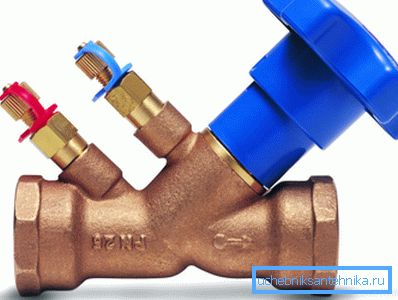
Valve classification
Such devices on water pipelines (as well as on gas pipelines, etc.) are used for several purposes:
- protection of equipment against pressure surges - for example, non-return valves are usually installed in front of the pumps in order to prevent damage to the equipment during a water hammer. Installation is performed using detachable connections so that even if there is no experience, the work can be done by hand;
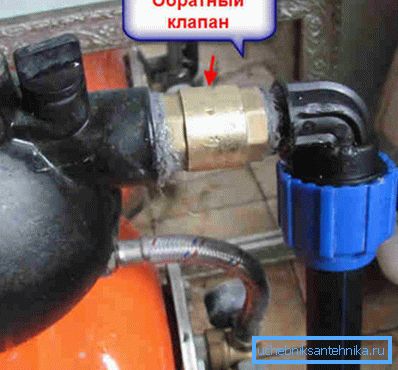
- adjustment function - in pipelines, the movement of fluid in pipes is permissible only in one direction, so that it will help in this situation as well. As soon as the water tries to go in the opposite direction, the petal will block the passage in the pipe;

- valves can also be used to adjust system pressure, the boundary force is selected, at which the transported medium opens the valve, as a result, as soon as the pressure in the pipeline exceeds the maximum, it opens and the pressure levels off. The air valve on the pipeline - an indispensable thing.
This functionality of the locking and adjusting devices is not exhausted; they can also be used to control pumps, during wastewater treatment, to minimize leaks, etc.
Read more about the design and principle of operation of different types of valves.
Recently, in addition to conventional valves (which act solely on the basis of the application of force), electromagnetic analogs have also appeared, they can be controlled remotely. The plunging solenoid valve can be used, for example, in the “smart home” system, with one remote control unit it is possible to control the regulating devices throughout the house and in the surrounding area.
Solenoid valves
The key difference from the other analogues is that it does not allow water to pass through when pressure increases, but only at the command of a person. This is their main advantage.
As for the construction, the key element can be considered a coil, which, when an electric current passes through it, causes the core to move, which opens / closes the bore. Such devices can operate both from batteries (24V supply voltage) and connected to the network (110V or 220V voltage).
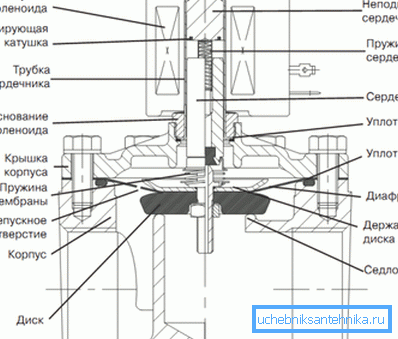
As for the classification, it can be distinguished:
- normally open / closed or bistable;
- Also, a 220 V solenoid plumbing valve can perform: the function of switching the flow (2/3 of the way), shut-off (2/2), three-way (3/2).
Note! When choosing, you need to take into account the peculiarities of the work of each model. For example, if an electromagnetic locking device is released with servo-control, then you need to know that it simply will not work at zero pressure drop, so that at least the minimum pressure drop is still needed.
With regard to the application, the electromagnetic devices fit perfectly into the concept of "smart home". For example, an electric water valve installed in a caisson will be able to drain water from the pipes of the water supply system automatically, even you will not need to leave the house, and this example is the simplest.
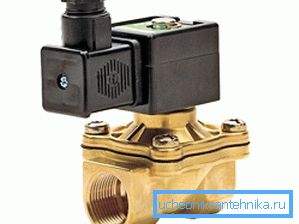
Simple and combined models
During the operation of the water supply system it is necessary to solve such tasks as
- release of air plugs from pipes that were formed directly during the operation;
Note! This problem has to be especially often solved during the operation of the heating system. Installation of a special valve is provided on all radiators to release excess air.
- when draining the water (for example, during the preservation of the pipe for the winter) it is necessary to ensure the flow of air that replaces the drained water in the pipe;
- when filling the pipe, the valve must ensure the release of air.
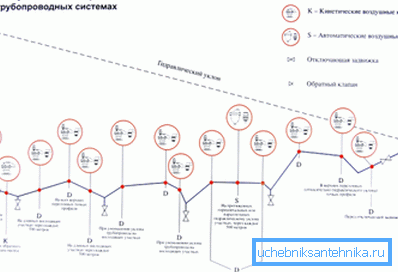
With the release of air traffic jams, a simple Mayevsky crane with manual control will cope, the price of such a device does not even reach 200 rubles.
But other types of valves may also be used:
- Single-function valves are used for automatic relief of overpressure. They are used to preserve the efficiency of pumping equipment, etc., except for equalizing the pressure in the system for anything else it is not adapted;
- combined - allow you to solve all the tasks listed. Their device uses a movable float, when the pipeline is filled with water, it rises and closes the large openings through which air enters, when the water is lowered, it also drops, the openings open and no vacuum is created in the pipe.
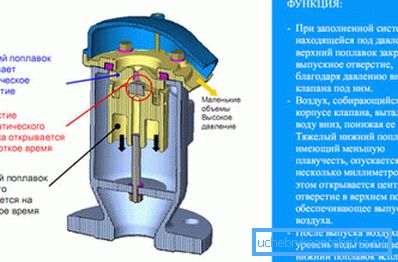
Note! Also in the combined devices may be small holes for pressure equalization.
Drain and drainage
The drain valve can be used not only in the house to discharge water from the pipes, but also as a device to ensure the safety of water supply from the well. Such devices, according to the principle of action, resemble combined air and in the winter, when the pressure in the pipe decreases, they discharge water into the well.
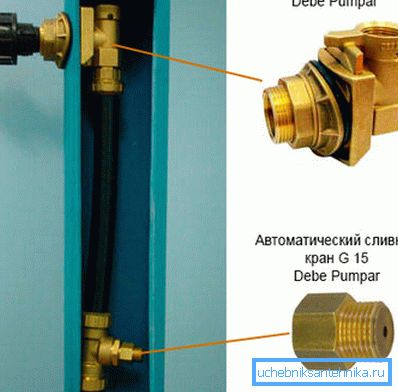
When the pressure is above the minimum, the ball closes the outlet, and the water goes into the house. If the pressure drops below the minimum mark, then the ball opens the outlet, and the water goes back into the well, this allows the system to remain when the water in the pipe freezes.
The drain valve is useful for protecting the hoses and pipes of the irrigation system; this device is especially useful when laying a separate water supply for irrigation. If the pipe is not laid very deeply and there is a risk of it freezing, then the drainage pipe itself will discharge the remaining water from the system.
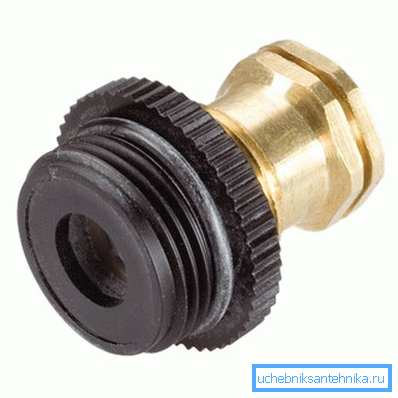
Of course, you can simply install a drain valve and do the same yourself, but nobody can boast of an ideal memory. The valve is not exactly forget to flush.
With regard to installation, the most commonly used threaded (ie, detachable) connection. Most often, the entire instruction is to tighten the cap nut with your hands, and then tighten it with a key. In industry, welded and flanged joints can be used.

Summarizing
The normal functioning of the pipeline without valves is simply impossible. It is this device that will allow you to flush out the system without problems and refill it; there will be no problems with air traffic jams either. The ease of installing such devices only adds to their popularity.
The video in this article shows the installation of a check valve in the pipeline for supplying hot water.